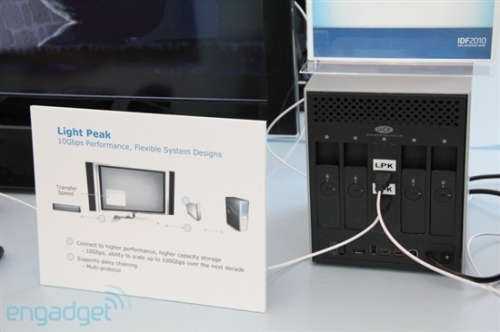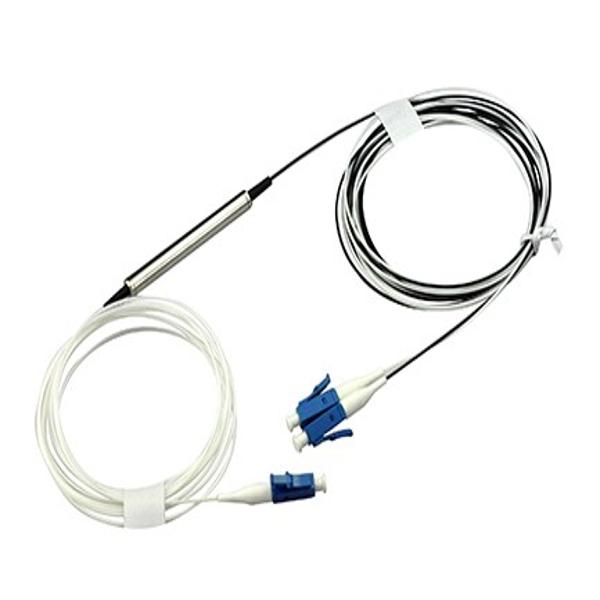Vendor Showcases Intel Light Peak Fiber Interface Solution
 Last year's IDF in the fall, Intel announced for the first time an optical fiber interface technology called Light Peak. The idea of ​​this technology was put forward by Apple and submitted to Intel for specific development. Because it supports multiple data protocols, it is expected to replace USB, HDMI, DisplayPort, and other interfaces in one move.
Last year's IDF in the fall, Intel announced for the first time an optical fiber interface technology called Light Peak. The idea of ​​this technology was put forward by Apple and submitted to Intel for specific development. Because it supports multiple data protocols, it is expected to replace USB, HDMI, DisplayPort, and other interfaces in one move. This year's fall IDF, many manufacturers have come up with prototypes of Light Peak interface products for display. For example, Compal offers a laptop that supports the Light Peak interface, connects to Western Digital's Light Peak external hard drive, grabs high-definition video data from it, and links Avid Rack Servers for real-time processing.
In another show, LaCie used a four-way RAID NAS with dual Light Peak interfaces and was exporting high-definition video to a Samsung LCD TV that had been remodeled (with EVGA graphics on the back) at a speed of 770 MB/s.
At present, these products are still in a relatively primitive prototype stage. At least until next year, the actual products that use the Light Peak interface will be available.
DWDM - Dense WaveLength Division Multiplex
DWDM (Dense Wavelength Division Multiplexing) is the ability to combine a group of optical wavelengths with a single optical fiber for transmission. This is a laser technology used to increase bandwidth on existing fiber optic backbone networks. More precisely, this technology multiplexes the tight spectral spacing of a single fiber carrier in a specified optical fiber in order to take advantage of the achievable transmission performance (for example, to minimize dispersion or attenuation). In this way, under a given information transmission capacity, the total number of optical fibers required can be reduced.


Dense Wdm,Dense Splitter,Dense Wdm Splitter
Shenzhen GL-COM Technology CO.,LTD. , https://www.szglcom.com